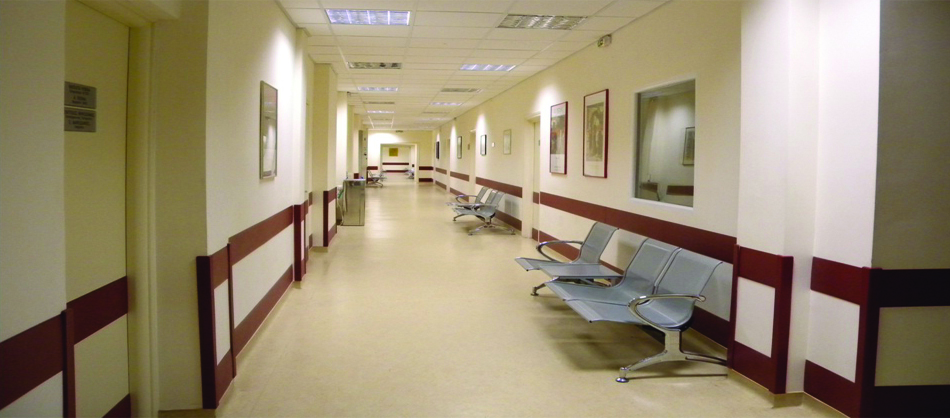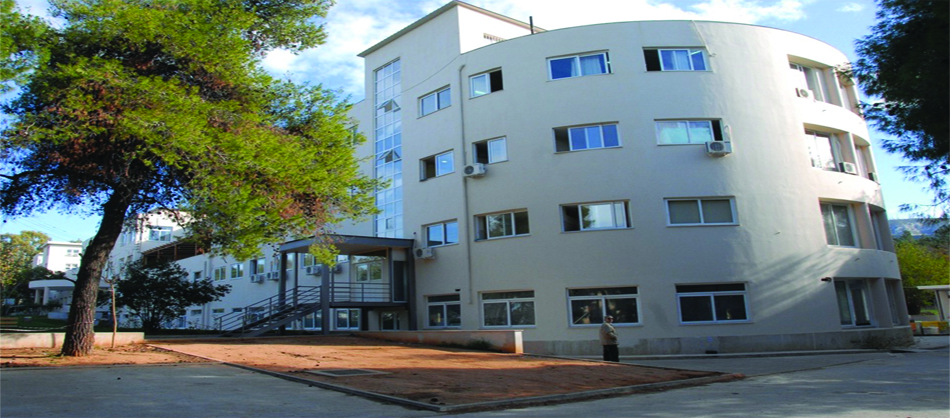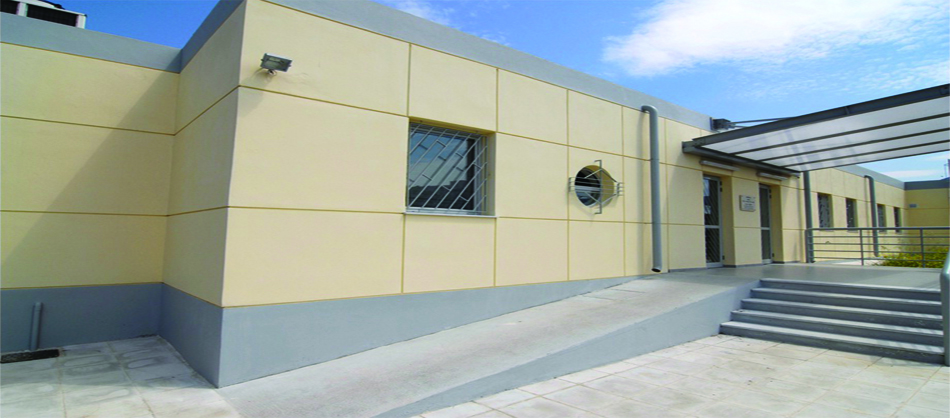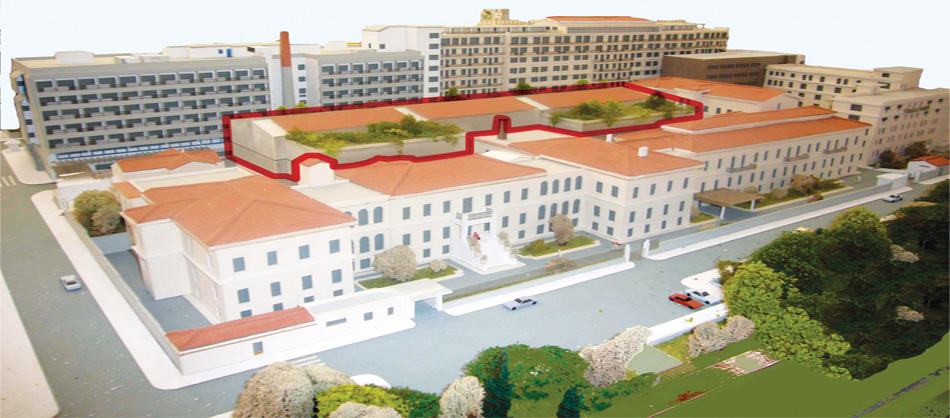Research Team 1
Τίτλος: «Sepsis and pulmonary diseases»
Supervisors: Anastasia Kotanidou - Stelios Orfanos - Ioanna Dimopoulou
Το ερευνητικό ενδιαφέρον της ομάδας εστιάζει στην παθοφυσιολογία της σήψης αλλά και σοβαρών πνευμονικών παθήσεων όπως η πνευμονική ίνωση και η πνευμονική υπέρταση. Μελετώνται μόρια και μονοπάτια που σχετίζονται με τη λειτουργία του ενδοθηλίου, αλλά και συμμετέχουν στην παθογένεση των πνευμονικών παθήσεων. Για τη διερεύνηση των μηχανισμών αυτών χρησιμοποιούνται κυτταρικές σειρές, πειραματόζωα ως μοντέλα των ασθενειών, αλλά και δείγματα ασθενών. Πιο συγκεκριμένα, η έρευνα της ομάδας περιλαμβάνει τα παρακάτω σημεία:
- Καθορισμός των μοριακών μηχανισμών της aquaporin 1 που εκφράζεται στα ουδετερόφιλα στην παθογένεση της σήψης.
- Μελέτη πολυμορφισμών γονιδίων που εμπλέκονται στη διαδικασία της πήξης.
- Προσδιορισμός του ρόλου νέων βιοδεικτών του ενδοθηλίου στην έγκαιρη διάγνωση της δυσλειτουργίας του ενδοθηλίου, καθώς και στην πρόγνωση της έκβασης των ασθενών με σήψη.
- Μελέτη του ρόλου της ενδοθηλίνης-1 και της ενδοθηλιακής-μεσεγχυματικής μετάπτωσης στο πειραματικό μοντέλο της πνευμονικής αρτηριακής υπέρτασης.
- Μελέτη του ρόλου της ενδοθηλίνης-1 στο επαγόμενο από μπλεομυκίνη μοντέλο πνευμονικής ίνωσης.
- Διερεύνηση της δράσης της σιμβαστατίνης στη βλάβη που προκαλείται από μηχανικό αερισμό.
- Ο ρόλος του TNF στην οξεία πνευμονική βλάβη
- Μελέτη βιολογικών εφαρμογών των φορέων λιπιδιακής σύστασης (Nanostructured Lipid Carriers, NLC) στην οξεία πνευμονική βλάβη (ALI) (Συνεργασία με την Φαρμακευτική Σχολή Αθηνών).
- Εφαρμογή της γονιδιακής θεραπείας μέσω λιποσωμάτων και νανοσωματιδίων στην αντιμετώπιση του συνδρόμου Οξείας Αναπνευστικής Δυσχέρειας (Συνεργασία με τη Φαρμακευτική Σχολή Αθηνών).
- Ο ρόλος της διακυτταρικής διαπερατότητας μέσω των ενδοθηλιακών caveolae στην πνευμονική βλάβη από αναπνευστήρα (VILI).
Το κύριο ερευνητικό ενδιαφέρον του εργαστηρίου μας εστιάζει στη μελέτη παθήσεων που σχετίζονται με τη Μονάδα Εντατικής Θεραπείας, όπως σήψη και πνευμονικές παθήσεις.
Indicative publications (2004 onwards)
1. Autotaxin levels in severe COVID-19, correlating with IL-6 levels, endothelial dysfunction biomarkers, and impaired functions of dendritic cells. Int. J. Mol. Sci. 2021, 22(18), 10006. https://doi.org/10.3390/ijms221810006.
ATX has likely a multifunctional role in COVID-19 pathogenesis, suggesting that its pharmacological targeting might represent an additional therapeutic option, both during and after hospitalization.
2. Evaluating the role of the interleukin-23/17 axis in critically-ill COVID-19 pa-tients. J. Pers. Med. 2021, 11(9), 891. https://doi.org/10.3390/jpm11090891.
Our results support the notion of inhibiting IL-17 in critical COVID-19 infection.
3. Testosterone, free, bioavailable and total, in patients with COVID-19. Minerva Endocrinology.
Total, free and bioavailable testosterone are prone to be low in patients with COVID-19, are negatively associated with disease severity, and may be considered to have prognostic value.
4. Vitamin D in infectious complications in critically ill patients with or without COVID-19.
https://pubmed.ncbi.nlm.nih.gov/34250458/
In this review, we discussed the role of vitamin D in the immune response, and more specifically its effect on immune cells. We additionally provided an overview of the studies that have investigated the predictive value of vitamin D in critical illness outcomes, and its therapeutic value as a supplement in critically ill patients.
5. Soluble Angiotensin Converting Enzyme 2 (ACE2) Is Upregulated and Soluble Endothelial Nitric Oxide Synthase (eNOS) Is Downregulated in COVID-19-induced Acute Respiratory Distress Syndrome (ARDS).
https://pubmed.ncbi.nlm.nih.gov/34358119/
In this study we showed that COVID-19-ARDS patients had considerably lower eNOS levels compared to the COVID-19 non-ARDS patients. On the other hand, sACE2 was significantly higher in the ARDS patients. iNOS, ADM and sACE activity did not differ. Our results might support the notion of two distinct defence mechanisms in COVID-19-derived ARDS; eNOS-derived nitric oxide could be one of them, while the dramatic rise in sACE2 may also represent an endogenous mechanism involved in severe COVID-19 complications, such as ARDS. These results could provide insight to therapeutical applications in COVID-19.
6. Endothelial, Immunothrombotic, and Inflammatory Biomarkers in the Risk of Mortality in Critically Ill COVID-19 Patients: The Role of Dexamethasone.
https://pubmed.ncbi.nlm.nih.gov/34359331/
In our single-center study, sVCAM-1, suPAR and presepsin appear to be valuable prognostic biomarkers in assessing ICU mortality risk in COVID-19 patients, even following dexamethasone administration.
7. Low admission immunoglobulin G levels predict poor outcome in patients with mild-to-critical COVID-19: a prospective, single-center study. J Epidemiol Glob Health (2021). https://doi.org/10.1007/s44197-021-00002-8.
In our COVID-19 cohort, admission subnormal IgG levels were independently associated with reduced survival.
8. Mineralocorticoid and glucocorticoid receptor expression in critical illness.
https://pubmed.ncbi.nlm.nih.gov/34316445/
In this review, we explored the clinical studies that aimed to elucidate the role of MR and GCR expression in the inflammatory response seen in critical illness.
9. Quality of Life, Depression, and Anxiety in Survivors of Critical Illness from a Greek ICU. A Prospective Observational Study.
https://pubmed.ncbi.nlm.nih.gov/34356227/
One year following ICU discharge, survivors of critical illness had impaired quality of life scores, as measured with the WHOQOL-Bref, compared to healthy subjects.
10. Increased glucocorticoid receptor alpha expression and signaling in critically-ill COVID-19 patients.
https://pubmed.ncbi.nlm.nih.gov/34034298/
ICU COVID-19 patients showed upregulated GCR-α and GILZ expression, along with cortisol levels, compared with ICU non-COVID-19 patients. Thus, on ICU admission, critical COVID-19 appears to be associated with hypercortisolemia, and increased synthesis of glucocorticoid receptor alpha and induced protein.
11. COVID-19 and Growth Hormone/Insulin-like growth factor 1: study in critically and non-critically ill patients.
https://pubmed.ncbi.nlm.nih.gov/34220703/
Our findings suggested that there might be an association between low IGF1 (and possibly GH) and poor outcome in patients with COVID-19.
12. Thyroid hormone alterations in critically ill and non-critically ill patients with COVID-19.
https://pubmed.ncbi.nlm.nih.gov/34010152/
Non-thyroidal illness syndrome (NTIS) is common and relates to the severity of disease rather than SARS-CoV-2 infection.
13. Could soluble endothelial protein C receptor levels recognize SARS-CoV2-positive patients requiring hospitalization?
https://pubmed.ncbi.nlm.nih.gov/33756504/
In our cohort, sEPCR levels in COVID-19 patients upon hospital admission appear considerably elevated compared to outpatients; this could lead to impaired APC activities and might contribute to the pro-coagulant phenotype reported in such patients. sEPCR measurement might be useful as a point-of-care test in SARS-CoV2 positive patients.
14. A role for bronchial epithelial autotaxin in ventilator-induced lung injury.
https://pubmed.ncbi.nlm.nih.gov/33778909/
ATX participates in VILI pathogenesis.
15. Selection of the Appropriate Control Group Is Essential in Evaluating the Cytokine Storm in COVID-19
https://pubmed.ncbi.nlm.nih.gov/33622933/
In our case control study, circulating IL-6 and IL-10 were lower, while TNF-α and IL-8 levels were higher in critically-ill COVID-19 patients, compared to critically-ill non-COVID-19 patients. Thus, it is difficult to infer whether the cytokine storm seen in COVID-19 differs from other critical conditions.
16. A novel ratio of CD8 +:B-cells as a prognostic marker of coronavirus disease 2019 patient progression and outcome
https://pubmed.ncbi.nlm.nih.gov/33550117/
The ratio of CD8+:B cells may serve as a useful prognostic marker for COVID-19 disease severity and outcome.
17. ICU Admission Levels of Endothelial Biomarkers as Predictors of Mortality in Critically Ill COVID-19 Patients
https://pubmed.ncbi.nlm.nih.gov/33477776/
This study demonstrated that elevated levels of sE-selectin, Ang-2 and sICAM-1 on hospital admission may predict ICU mortality. Endotheliopathy in COVID-19 is likely associated with critical illness and death.
18. Glycemia, Beta-Cell Function and Sensitivity to Insulin in Mildly to Critically Ill Covid-19 Patients
https://pubmed.ncbi.nlm.nih.gov/33466617/
In our series of patients with Covid-19, a substantial number of patients with and without diabetes had admission hyperglycemia and those who were critically ill may have had compromised insulin secretion and lowered sensitivity to insulin.
19. Study of inflammatory biomarkers in COPD and asthma.
https://pubmed.ncbi.nlm.nih.gov/33393648/
This study indicated that leptin and CRP levels may be useful biomarkers in monitoring COPD and asthma response to treatment during an exacerbation episode. TNF-α could distinguish between asthma and COPD stable phase.
20. Serum Prognostic Factors of Heterotopic Ossification in Critically Ill Patients.
https://www.sciendo.com/article/10.2478/jccm-2020-0046
Our critically ill patients who developed heterotopic ossification have significantly decreased levels of BMP-2 and RANKL on admission, suggesting that these molecules may be used as prognostic markers for this debilitating condition.
21. Low 25-Hydroxyvitamin D Levels on Admission to the Intensive Care Unit May Predispose COVID-19 Pneumonia Patients to a Higher 28-Day Mortality Risk: A Pilot Study on a Greek ICU Cohort
https://pubmed.ncbi.nlm.nih.gov/33316914/
In our ICU cohort, low 25(OH)D levels may predispose COVID-19 patients to an increased 28-day mortality risk.
22. Vitamin D deficiency correlates with a reduced number of natural killer cells in intensive care unit (ICU) and non-ICU patients with COVID-19 pneumonia
https://pubmed.ncbi.nlm.nih.gov/33309735/
In our pilot, single-centre, limited sample size study, we were able to demonstrate that vitamin D deficiency was associated with reduced numbers of NK cells; specifically, vitamin D deficient patients presented with mild NK lymphopenia (
23. Endothelial Damage in Acute Respiratory Distress Syndrome
https://pubmed.ncbi.nlm.nih.gov/33233715/
In this review, we will discuss the underlying pathology of endothelial dysfunction leading to ARDS and emerging therapies. Furthermore, we will present a brief overview demonstrating that endotheliopathy is an important feature of hospitalised patients with coronavirus disease-19 (COVID-19).
24. Lactate kinetics reflect organ dysfunction and are associated with adverse outcomes in Intensive Care Unit patients with COVID-19 pneumonia: preliminary results from a Greek single-centre study.
https://pubmed.ncbi.nlm.nih.gov/32998323/
In our ICU patients with SARS-CoV-2 infection, initial blood lactate was an independent outcome predictor in COVID-19 ICU patients. Our results showed that the time course of lactate mirrors organ dysfunction and is associated with poor clinical outcomes.
25. Post-traumatic stress disorder and burnout in acute healthcare professionals during the SARS-CoV-2 pandemic: a cross-sectional study.
https://jccm.ro/wp-content/uploads/2020/11/jccm-2020-0042.pdf
In our sample of first-line Greek healthcare professionals against SARSCoV-2, most were proven to be quite resilient to this challenge. One third of them had post-traumatic stress disorder, which depended on their degree of emotional exhaustion. Healthcare professionals, as represented by this study, performed their duties without feeling helpless and developing adverse psychological reactions
26. Clinical Study of Hyperglycemia and SARS-CoV-2 Infection in Intensive Care Unit Patients
https://pubmed.ncbi.nlm.nih.gov/32871848/
In our ICU patients with SARS-CoV-2 infection, and no history of diabetes, a substantial number of patients had hyperglycemia, lending credence to reports that speculated a tentative association between SARS-CoV-2 and hyperglycemia. This finding is important, since hyperglycemia can lead to further infectious complications.
27. Serum coenzyme Q10 levels are decreased in critically-ill septic patients.
https://pubmed.ncbi.nlm.nih.gov/32705879/
The results of this study showed that CoQ10 levels in critically-ill patients are low on ICU admission compared to healthy controls, and are further decreased at sepsis and septic shock. These results might suggest that sepsis severity leads to CoQ10 depletion.
28. Knockdown of Bone Morphogenetic Protein Type II Receptor Leads to Decreased Aquaporin 1 Expression and Function in Human Pulmonary Microvascular Endothelial Cells.
https://pubmed.ncbi.nlm.nih.gov/32687728/
In this in vitro model we demonstrated that knock-down of BMPR2 leads to reduced expression and function of Aqp1.
29. Decreased bone morphogenetic protein type II receptor and BMP-related signalling molecules' expression in aquaporin 1-silenced human pulmonary microvascular endothelial cells.
https://www.ncbi.nlm.nih.gov/pubmed/32304816
This study demonstrated the in vitro interaction of BMPR2 and Aqp1.
30. Ghrelin alterations during experimental and human sepsis.
https://www.ncbi.nlm.nih.gov/pubmed/31830702
In this study we demonstrated that active and total ghrelin increase in sepsis, in a well-defined cohort of ICU patients. The same applies to the experimental sepsis model used in the study.
https://www.ncbi.nlm.nih.gov/pubmed/31819797
In this study we showed that prophylactic administration of treprostinil maintained lung function, and prevented bleomycin-induced lung injury, fibrosis, and vascular remodelling. This could suggest its potential therapeutic efficacy in pulmonary fibrosis and possibly in pulmonary hypertension related to chronic lung diseases.
32. Longitudinal evaluation of glucocorticoid receptor alpha/beta expression and signalling, adrenocortical function and cytokines in critically ill steroid-free patients.
https://www.ncbi.nlm.nih.gov/pubmed/31756425
In this study we found that GCR expression and hypothalamic-pituitary-adrenal axis function undergo a biphasic response during critical illness. The dissociation between low GCR expression and high cortisol implies an abnormal stress response.
33. Decreased glucocorticoid receptor expression during critical illness.
https://www.ncbi.nlm.nih.gov/pubmed/30703253
The results of this study suggest that critically ill patients have highly variable expression of alpha and beta GCR, and moreover, the levels of both receptors decrease during ICU stay. Taken together, these might explain the differential responsiveness of patients to exogenous steroid administration or to endogenous cortisol secretion.
34. Activated Protein C has No Effect on Pulmonary Capillary Endothelial Function in Septic Patients with Acute Respiratory Distress Syndrome: Association of Endothelial Dysfunction with Mortality.
https://www.ncbi.nlm.nih.gov/pubmed/29549655
In this study we demonstrated that recombinant human (rh)APC administration in septic patients with ARDS did not improve PCEB-ACE activity indices. However, these indices might be useful in the early recognition of septic patients with ARDS at high risk of mortality.
35. The H3 Haplotype of the EPCR Gene Determines High sEPCR Levels in Critically Ill Septic Patients.
https://www.ncbi.nlm.nih.gov/pubmed/29549653
In this study, using the preceding and current sepsis definitions, sEPCR levels and the H3 haplotype were not associated with sepsis severity and the risk of poor outcomes in septic patients; however, the EPCR H3 allele contributed to higher levels of sEPCR.
36. Serum Admission 25-Hydroxyvitamin D Levels and Outcomes in Initially Non-Septic Critically Ill Patients.
https://www.ncbi.nlm.nih.gov/pubmed/29337839
In this study, initially non-septic critically ill patients had very low ICU admission 25-hydroxyvitamin D levels. Severely low vitamin D levels (
37. Highly Selective Endothelin-1 Receptor A Inhibition Prevents Bleomycin-Induced Pulmonary Inflammation and Fibrosis in Mice.
https://www.ncbi.nlm.nih.gov/pubmed/29131071
In our bleomycin-induced pulmonary fibrosis model, prophylactic highly selective endothelin-1 inhibition improves survival, preserves lung function, attenuates lung injury, and reduces collagen deposition.
38. Differential Expression of Aquaporins in Experimental Models of Acute Lung Injury.
https://www.ncbi.nlm.nih.gov/pubmed/28882955
In this study we showed that the participation of the aquaporin water family in the acute inflammatory process depends on localization and the type of lung injury.
39. Vascular endothelial-cadherin downregulation as a feature of endothelial transdifferentiation in monocrotaline-induced pulmonary hypertension.
https://www.ncbi.nlm.nih.gov/pubmed/27233997
In this study we propose that transcriptional repression of VE-cadherin by nitrosative stress is involved in endothelial-mesenchymal transdifferentiation in experimental PH.
40. Exhaled nitric oxide and carbon monoxide in mechanically ventilated brain-injured patients.
https://www.ncbi.nlm.nih.gov/pubmed/26934167
In this study we found that exhaled NO correlated with blood pH in the ZEEP group and with plasma levels of IL-6 in the PEEP group. We also observed differential changes in exhaled NO and CO in mechanically-ventilated patients even in the absence of manifest lung injury or sepsis. These may suggest subtle pulmonary inflammation and support application of real time breath analysis for molecular monitoring in critically ill patients.
41. Inhibition of HMGCoA reductase by simvastatin protects mice from injurious mechanical ventilation.
https://www.ncbi.nlm.nih.gov/pubmed/25848815
In this study we demonstrated that high-dose simvastatin prevents experimental hyperinflation lung injury by angioprotective and anti-inflammatory effects.
42. Does serum lactate combined with soluble endothelial selectins at ICU admission predict sepsis development?
https://www.ncbi.nlm.nih.gov/pubmed/25792662
In our patient cohort, combining sE- and sP-selectin with serum lactate offers better prognostic value for sepsis development during ICU hospitalization.
43. Elevated soluble EPCR levels at ICU admission are associated with sepsis development.
https://www.ncbi.nlm.nih.gov/pubmed/25220546
This study showed that upon ICU admission, sEPCR levels in initially non-septic critically-ill patients appear elevated in the subjects who will subsequently become septic.
44. Elevated biomarkers of endothelial dysfunction/activation at ICU admission are associated with sepsis development.
https://www.ncbi.nlm.nih.gov/pubmed/25016133
We demonstrated that circulating E- and P-selectin levels at ICU admission are related to sepsis development in time.
45. Induced expression and functional effects of Aquaporin-1 inhuman leukocytes in sepsis.
http://www.ncbi.nlm.nih.gov/pubmed/24028651
The present study demonstrated that Aquaporin-1 is induced in leukocytes of patients with ICU-acquired sepsis and exhibits higher expression in septic shock. This phenomenon may be due to LPS-triggered NF-κΒ activation that can also lead to alterations in cell membrane permeability.
46. Endothelial protein C receptor polymorphisms and risk of severe sepsis in critically ill patients.
http://www.ncbi.nlm.nih.gov/pubmed/23881209
In this study we examined whether haplotypes of the EPCR gene can modify the possibility of developing severe sepsis and/or septic shock. The results of this study indicated that simultaneous carriers of minor alleles belonging to both the H1 and H3 haplotypes may be at reduced risk of developing severe sepsis and/or septic shock in our cohort of critically ill patients.
47. Caveolar uptake and endothelial-protective effects of nanostructured lipid carriers in Acid aspiration murine acute lung injury.
http://www.ncbi.nlm.nih.gov/pubmed/23549752
This study showed that nanostructured lipid carriers are engulfed by endothelial caveolae and possess endothelial-protective effects in mice with acute lung injury induced by aspiration of hydrochloric acid.
48. Acid-induced acute lung injury in mice is associated with P44/42 and c-Jun N-terminal kinase activation and requires the function of tumor necrosis factor α receptor I.
http://www.ncbi.nlm.nih.gov/pubmed/22814289
In the present study we demonstrated that acute lung injury induced by aspiration of hydrochloric acid requires the TNF-α receptor I function and associates with activation of downstream proinflammatory signalling pathways p44/42 and c-Jun N-terminal kinase (JNK).
49. Metformin attenuates ventilator-induced lung injury.
http://www.ncbi.nlm.nih.gov/pubmed/22827994
This study demonstrated that pretreatment with metformin in rabbits preserves alveolar capillary permeability and, thus, decreases the severity of ventilator-induced lung injury in this model.
50. Exhaled breath condensate in mechanically ventilated brain-injured patients with no lung injury or sepsis.
http://www.ncbi.nlm.nih.gov/pubmed/21521967
In brain-injured, mechanically ventilated patients with neither acute lung injury nor sepsis, exhaled breath condensate (EBC) markers appear to indicate the presence of subtle pulmonary that is mostly unaffected by positive end-expiratory pressure (PEEP).
51. Inhaled activated protein C protects mice from ventilator-induced lung injury.
http://www.ncbi.nlm.nih.gov/pubmed/20403177
This study demonstrated that topical application of activated protein C (APC) by inhalation may effectively reduce lung injury induced by mechanical ventilation in mice.
53. A critical role for gelsolin in ventilator-induced lung injury.
http://www.ncbi.nlm.nih.gov/pubmed/19202007
Through the experiments of the present study we showed that the expression of gelsolin (GSN) is necessary for efficient neutrophil infiltration, which was found to be a prerequisite for VILI induction in this model. Therefore, intracellular GSN and GSN-mediated responses were shown to be an important player in the pathogenesis of VILI.
53. Inhaled activated protein C attenuates lung injury induced by aerosolized endotoxin in mice.
http://www.ncbi.nlm.nih.gov/pubmed/16959545
In the present study we demonstrated that inhaled recombinant human activated protein C (rhAPC) attenuated the aerosolized LPS-induced lung inflammation and that this effect may be associated with leukocyte trafficking modifications.
Three (3) reviews that refer to the role of the endothelium in acute lung injury (ALI) and acute respiratory distress syndrome. (ARDS).
54. Endothelial pathomechanisms in acute lung injury.
http://www.ncbi.nlm.nih.gov/pubmed/18722553
55. The endothelium in acute lung injury/acute respiratory distress syndrome.
http://www.ncbi.nlm.nih.gov/pubmed/18195622
56. Pulmonary endothelium in acute lung injury: from basic science to the critically ill.
http://www.ncbi.nlm.nih.gov/pubmed/15258728
Submitted/In preparation:
1. HLA subtype analysis in a Greek population of COVID-19 patients.
2. Mineralocorticoid receptor is down-regulated and 11beta-hydroxysteroid dehydrogenase type 2 is up-regulated in peripheral polymorphonuclear cells of critically ill patient.
3. Pituitary adrenal responses and glucocorticoid receptor expression in critically patients with COVID-19.
4. Adrenal function in relation to cytokines and outcome in non-critically ill patients with SARS-CoV-2 infection.
















